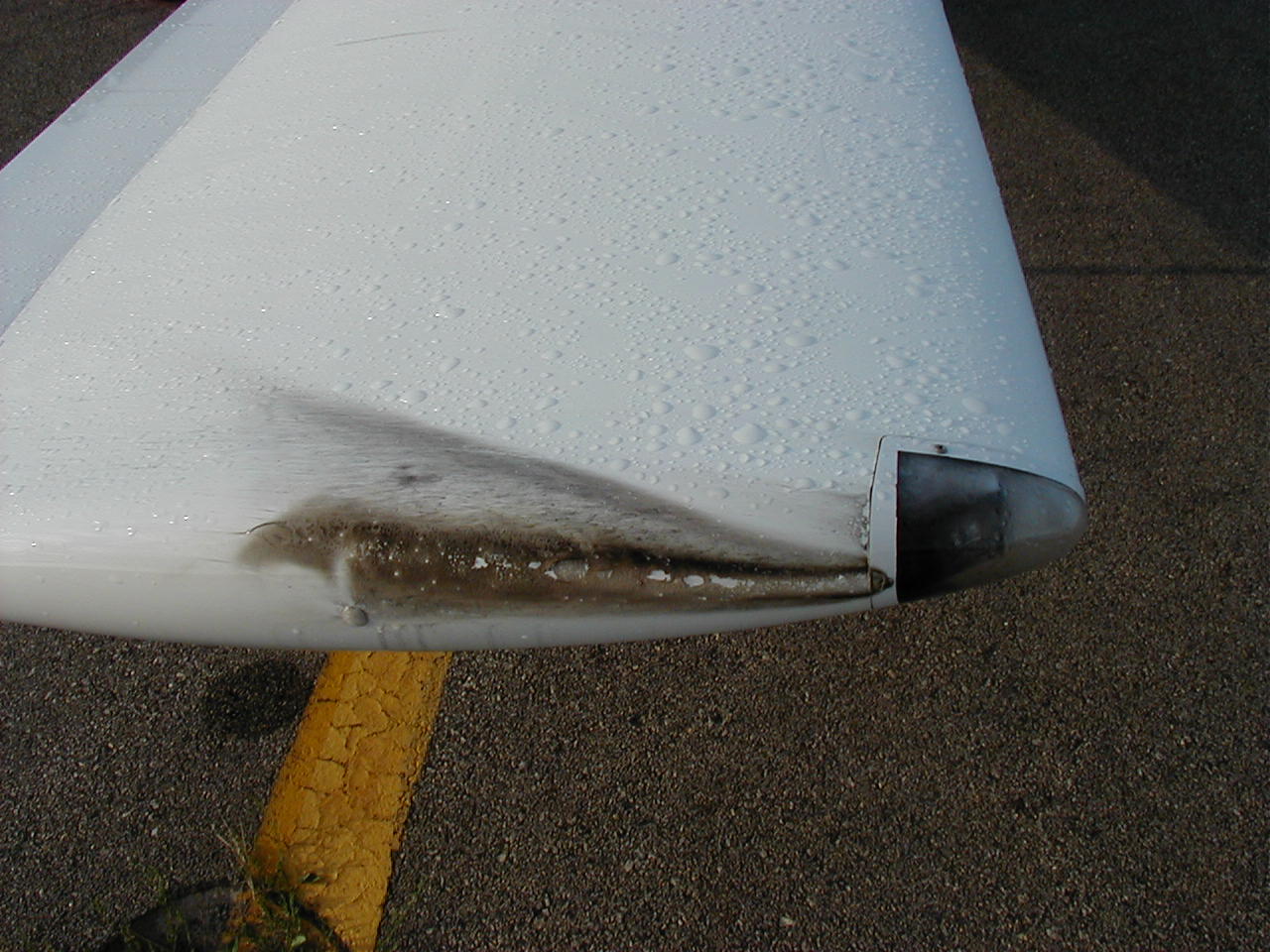
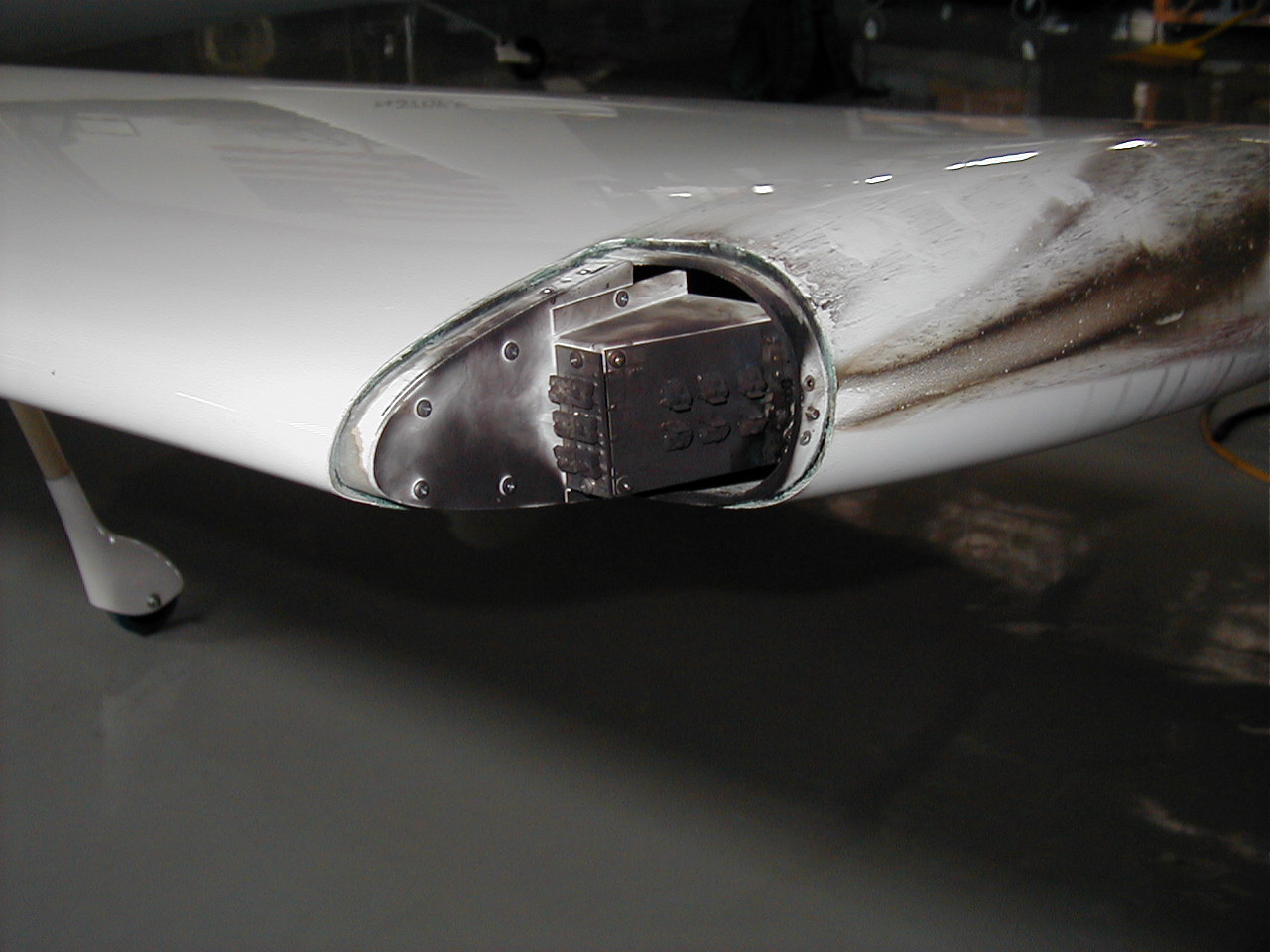
Anatomy of a Lightning Strike
And then everything went quiet.............
The Oshkosh air show had just concluded and Jenny & I packed the Europa up for the first leg of our planned trip to Calgary in Canada. Our first stop was going to be North West of Minneapolis. I had been watching the weather closely and although it was not optimal, it looked pretty good for a day of VFR cruising. I picked up my final briefing and headed out the airport early in the afternoon. After packing the aircraft and doing my last checks we taxied out and got underway.
About an hour into the journey the weather didn't quite appear as advertised. The sky in the NWW quadrant was looking darker than expected and there was a lot more haze than expected. After about 15 more minutes I decided that it was time to call for an updated weather report. I dialed up the Flight Service frequency and waited while they were talking with another aircraft. While I was waiting I noticed a short streak of cloud to cloud lightning about 10 miles of my port wing. I immediately turned away from the area and headed for clear blue sky out to my starboard. I headed away from the area of about 5 minutes and then....... everything went quiet ...
The panel went blank, and apart from the engine running things were quite. I looked out at both wings and saw long black training streaks on the tips. My first reaction was to check my 4 axis of control to ensure the aircraft was still flyable, which is was. I then surveyed the exterior for any other signs of damage, and none was evident. My next concern was electric fuel pumps continuing to run. I have my aircraft wired up with an E-Buss setup as described by Bob Knuckles of Aero Electric. In addition, one fuel pump is connected directly the to alternator so I turned on the E-Buss and GPS / Radio along with the transponder sprang into life but nothing much else. I press the "Nearest" function but the GPS seemed pretty confused so I dug out my hand held. As luck would have it I was only a few miles away from an airport and with over 8000' beneath me I knew I even with the engine out I was fine.
The airfield was un attended and taxied up the the office and shut the aircraft down. We both got out and needless to say were pretty shaken by the experience.


I secured the aircraft and called it a day as I was pretty well done with flying for a while. A couple of hours later an enormous thunderstorm rolled through, and looking on the weather radar is it appeared to cover most of the state. I called the weather briefer at the Flight Service Station and he told me that they had got it wrong, and the weather pattern was completely unexpected..
The next day I unpacked the aircraft and started to survey the damage. The first thing I looked for was welding of the control mechanisms and I couldn't see any evidence of this. I pulled off the tip lights and looked inside the wings and I could not see any internal damage, nor was any evident in the inspection ports. It appeared that the conduction path was only along the navigation lights wiring. Surprisingly the wires seemed intact.
The next problem was that the main contactor would not energize. As part of reducing the system load I had used a Kilovolt contactor which had a circuit on it to reduce the hold in current. The fuse to the contactor had vaporized, however when I replaced it the contactor still wouldn't energize, so I bridged it out with a solid jumper cable and started the engine.
At this point I had what appeared to be a structurally intact aircraft and a running motor so the last thing to check was the radio. I had a hand held and did a transmit test of the main radio and I was amazed to see that it worked. As it turned out the GX60, SL70 and the EIS Engine monitor were the only pieces of electronics on the aircraft that survived.
The 70 minute trip home was pretty uneventful and I put the aircraft in the hanger and left it. To be honest I was pretty hacked off, and I shouldn't be, I should have been thankful that we weren't killed.
Surveying the damage
I dragged the Comanche out and took a break over in Kentucky. It had been a while since I had flown the Comanche and had forgotten what a nice flying aircraft it is. The old joke of, if you want a good two place aircraft then buy a 4 place aircraft is pretty true. The first weekend after my return I started checking things out and here is what I found no longer worked.
Navaids TC / Autopilot
Navaids Servo
Intercom
Panel dimmer
Fuel gauge
Main contactor
Wing tip lights
Tail light
Narco 122 VOR / Localizer / Glideslope / Marker beacon
Navaids
Both the servo and head were taken out. I took the cover off and the tracks were missing off the board so I figured it was a basket case and I sent it back to the factory.
Intercom.
The Intercom was a panel mount unit from XCOM and it seemed okay at first, but every now and then the transmitter would behave like it had a stuck mike. At first I suspected the mike switch on the control column, but after a slow process of elimination I began to suspect the intercom. I replaced the unit and the fault didn't reappear.
Fuel gauge
I have a fuel gauge system designed by Tony Krzyzewski. It has a zero to one inch pressure transducer at the lowest point in the tank and it sends via a microprocessor a signal to a panel display. I expected that the microprocessors had failed, how ever it turned out that one of the 4 RS232 drivers on the MAX232 had failed. Why one and not the others I don't know, but it sure made fault diagnosis difficult.
Panel dimmer
The panel dimmer is one Bob Knuckles designs sold by B&C. I decided for 30 bucks I wasn't going to mess with it, but as it turned out I wish I had. The new one had a different pin out and the wiring loom was pretty embedded so I ended up replacing the parts and burnt off tracks.
Main contactor
The main contactor was beyond repair so I replaced it with a prototype solid state unit from Eric Jones of http://www.periheliondesign.com/ It also will be susceptible to large voltage spikes, but I am hoping that I won't get hit by lighting again. You can see in the photograph where the parts had vaporized and left burn marks on the casing.
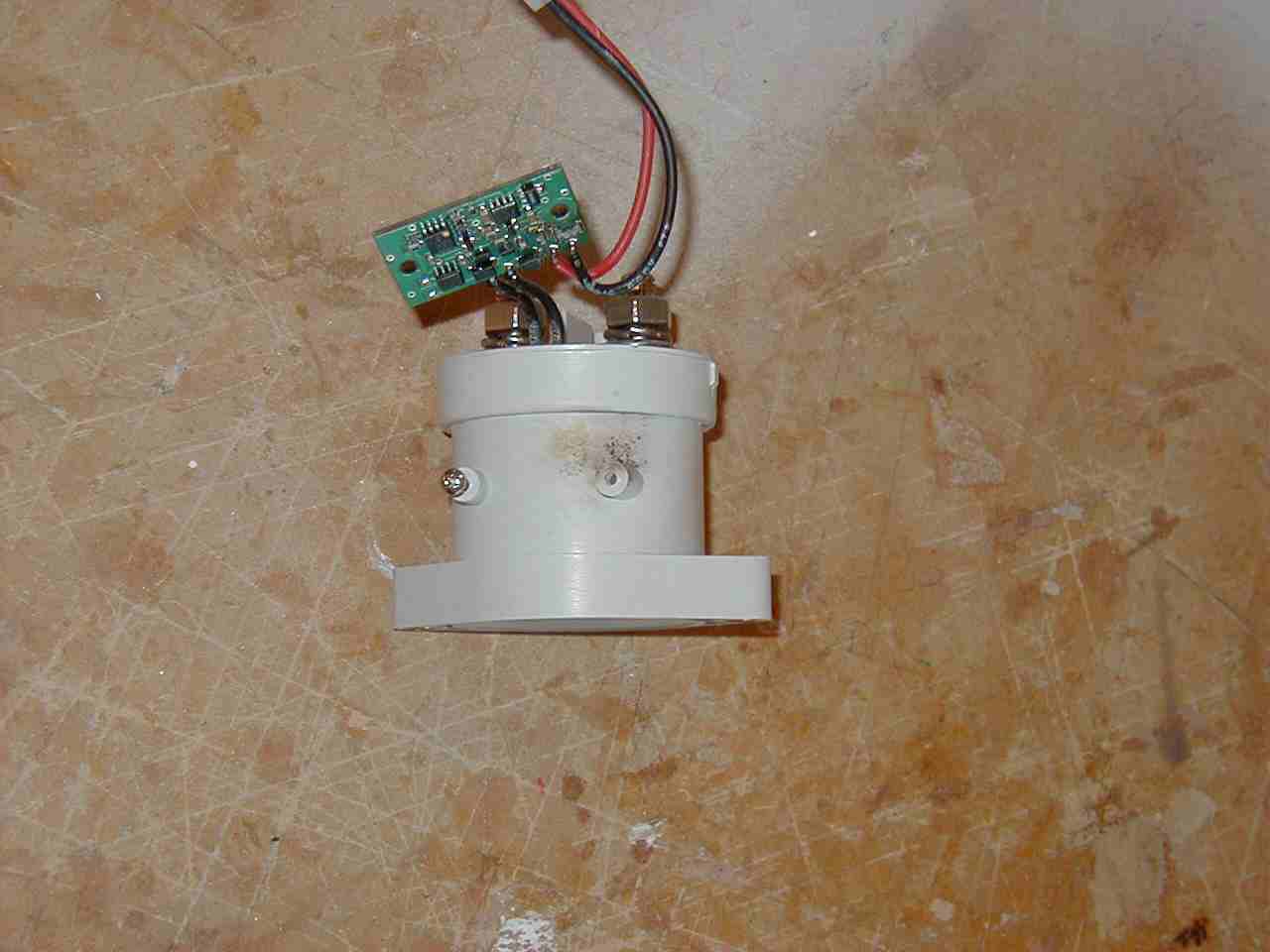
Wing tip lights
The wing tip lights are also made by Eric Jones of http://www.periheliondesign.com. They were pretty vaporized so I bought some new ones. Quite a bit of the metal was deposited on the inside of the wing tip lens covers and I had to sand it off with wet and dry and re polish then with Mico Mesh.
The tail light LED was taken out as well, interestingly enough the 700 ma semiconductor current limit survived just fine, but on Eric's advice I replaced it as well.
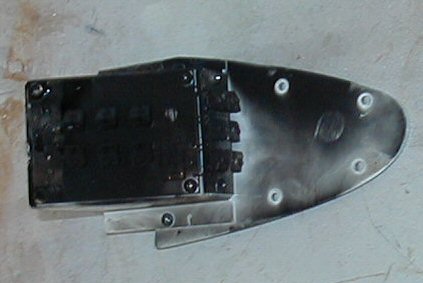
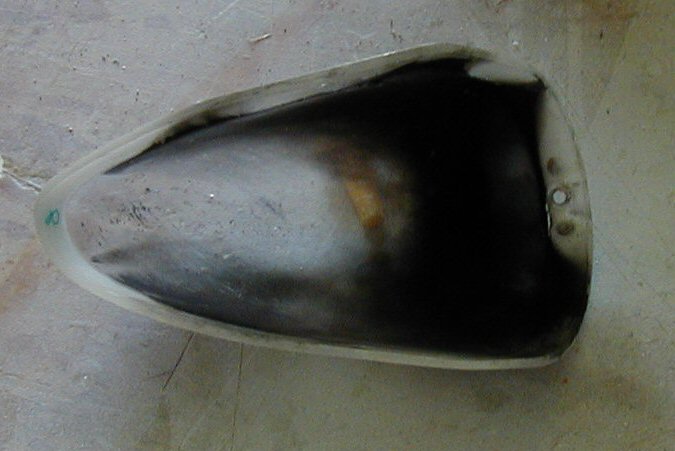
Narco 122 VOR / Localizer / Glideslope / Marker beacon
Interestingly enough this wasn't even turned on but it didn't matter. I was very fortunate to have Fred Fillenger volunteer to take a look at it. Apparently it was pretty sad inside so we bought a second non working unit on Ebay and Fred made one good one from both. It actually came back working better than before.
So, where did the lightning go....
Its hard to be sure, but it looks like the lightning entered the starboard wing and exited the port side. The strangest thing about this was that on the starboard side I had clear blue sky as far as I could see, and on the port side any evidence of storm activity was 20 miles way. At no time did I see any typical thunder clouds forming and the main storm front didn't pass through for three more hours. It had tracked through the wing tip wiring, though the panel and out the other side. I have a single potentiometer that both dims the lights and turns on a relay to turn on the nav lights. The lightning jumped the relay and though the dimmer board. From there it tracked in to the VOR light circuit and I think down the left / right signal into the Navaids. The intercom is connected to the Navaids to disable it when the PTT button is pressed, so I can only assume that how it got into the XCOM. As for the main contactor, your guess is as good as mine, but a few milliseconds of lightning can sure go a long way.
Lessons learned
Well a few things I guess. A weather forecast 2 hours old might as well be 100 years old. If I called on departure I might of been warned. Secondly, it was obvious that the weather wasn't as advertised and I should had reacted to my instinct much sooner. I wasted 15 minutes being in denial. Lastly, I don't know it if would have helped, but I normally file IFR for long cross country legs and although Centers job isn't run weather for you I have had them warn me in the past of unexpected activity.
N378PJ took about 5 weekends worth of work to get it flying again, and it wasn't back to a state of full repair for a couple of months. With a little bit of help from my friends it was all fixed for about $1200.